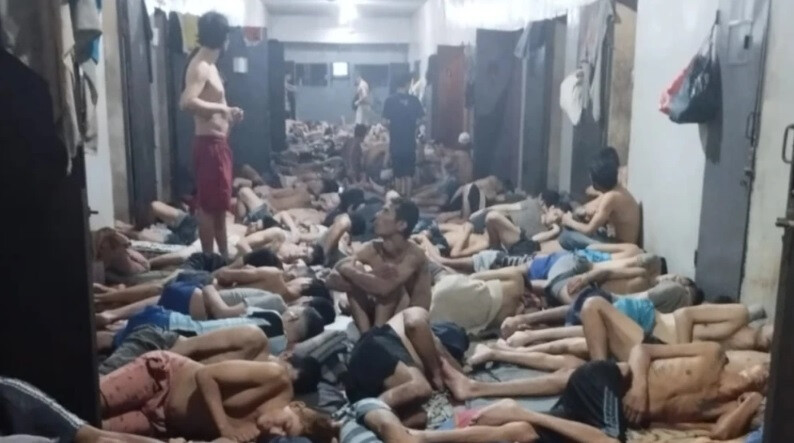
Paraguay - Inmates were huddled together, bodies pressed against the floor of a cramped cell. This was the scene in a ward of the San Pedro prison. The government claims that it has 'recovered' not only the Tacumbu prison but the entire prison system following 'Operation Veneratio,' even touting it as a model case for the region. However, the reality is far from this. The fact that a commemorative party for the PCC (Brazil's First Command, the largest criminal organization in Brazil) was openly held within the prison, complete with a cake, proves this. Recently, even at the Minga Guazú prison, which boasts tight security, eight high-profile criminals escaped, clearly demonstrating that the crisis and neglect within the prison system are only strengthening criminal organizations.
Senator Rafael Filizzola criticized, "The government has not solved the problem at all. They have only maintained control for a few months. Criminal organizations such as the PCC, Comando Vermelho, and Clan Rotela have always maintained their power. Now, even prisons designated as maximum security do not meet those standards."
Senator Filizzola pointed out, "There was a conceptual problem from the beginning," adding, "When former Minister of Justice Ángel Barchini initiated a training program for prison guards at the Minga Guazú prison, he emphasized more than ever that guards would be trained 'within a military-style disciplinary structure.' Training even took place at the Paraguari Artillery Command. They even mentioned a 'new prison model' to eradicate corruption within prisons and the long-standing collusion with criminal organizations, but clearly, it has not been effective."
Furthermore, he criticized that the prison administration technical course, which the previous government presented as a strategy for specialization, had been reduced from two years of initial education to a six-week orientation, and that it was taking a military-style approach far removed from actual prison work.
Senator Filizzola also stated, "Regarding the infrastructure and technical equipment for which massive investments were announced, it is a serious flaw that the monitoring room is staffed by only one employee who seems inadequately trained, and that there is no connection to the central system at the Ministry of Justice headquarters."
In addition to the escape incident last week, the contents of a report sent to the National Prison Directorate, which were leaked to the media, also reveal serious problems. The report detailed seven vulnerabilities, including malfunctioning automatic locks, easily opened broken latches, metal handles and supports that could be used as weapons, and even a loophole where the roof could be easily accessed through a window in one module. This is a clear example of the overall neglect of the prison system.
In response, Senator Filizzola strongly criticized, "The work being done to improve the completely broken prison system has once again proven to be a lie." He lamented, "Like President Bukele's show, they transferred prisoners to maximum security facilities, but they have not properly maintained the system, managed the infrastructure, secured vehicles, or even provided proper locks. As we have seen in the Emboscada and Minga Guazú prisons, these basic problems have not been resolved despite the continuous demands of the prison directors."
Finally, Senator Filizzola emphasized, "The prison system is complex, and the root of the problem is structural. To seriously address these issues, we must not deny reality or fail to acknowledge mistakes by packaging them as isolated incidents caused by a few 'bad apples'." He added, "The problem of corruption is part of the institutional culture and is pervasive throughout the system. These issues cannot be resolved with superficial measures."
[Copyright (c) Global Economic Times. All Rights Reserved.]






























